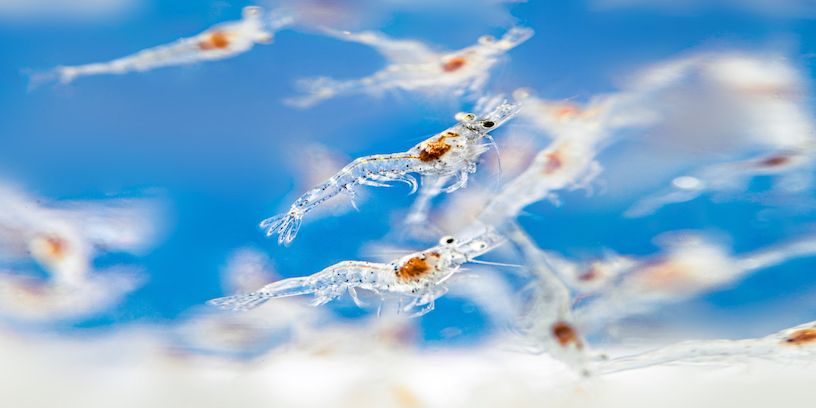Breed selection is one of the most important stages of the shrimp farming process because the quality of the breed is the main factor determining the survival rate of the shrimp herd, as well as the growth rate, production cost and quality of commercial shrimp.

Whiteleg shrimp Postlarvae stage
The stocked whiteleg shrimp were post larvae 10-12 days old (PL10-12). At market prices, the cost of buying a breed usually accounts for less than 10% of the product price, but it is a decisive factor to 60% of the success of the crop.
Choosing a poor quality breed means risk of problems such as: disease, poor disease resistance, low survival rate, slow growth rate, etc. causing costs to increase, and risk losing everything in the worst case. Therefore, farmers need to be very careful, choose quality and suitable seeds according to the following criteria:
1. Having a clear origin and origin
Shrimp are healthy from the origin, so when choosing shrimp breed for stocking, people need to find out the origin of the broodstock, the rearing process, how’s the feed, etc. and should only buy from reputable breed production/suppliers, especially those with:
Broodstock shrimp of clear origin, are disease-free (SPF) or disease-resistant (SPR) shrimp, have undergone strict quarantine, isolation and disease screening when rearing;
Breeds have a rearing period of 22-25 days (from the date of spawning to the stage of PL12), are raised by a process without antibiotics, chemicals and are fed with fresh algae, live food such as rotifers, artemia , etc.
2. Ensure technical requirements
Whiteleg shrimp seed PL12 must meet at least the following technical requirements:
|
Targets |
Requirement |
| 1. Perception | |
| Figure | Complete body, no deformity |
| Subsections | 2 to 4 spines on peduncle Intact appendages Straight whiskers, spreading tail |
| 2. Color | Body light gray, and smooth, hepatopancreas dark yellow or dark brown |
| 3. Body length from tip to tip of tail |
|
| 4. Operation Status |
|
| 5. The ability to catch prey | Catching prey regularly, intestines full of food without interruption |
| 6. Health status | Meet the following reactions:
|
In addition, people can also evaluate other appearance factors such as: slender, long abdominal segments; full abdominal muscles; shell-filled meat; balanced head and body, etc. at the same time visually check by shocking method:
- Formalin shock 100 ppm
- Shock by suddenly lowering salinity to 0%

Visual inspection of shrimp seed quality
With the above shocking method, if the shrimp is 100% alive after 30 minutes, it is qualified and if it is over 90% after 1 hour, it can be considered a healthy breed.
3. Check for pathogenic bacteria and viruses
To check for pathogenic bacteria and viruses, farmers can rely on experience, observing the morphology and expression of shrimp to recognize the typical manifestations of each disease, for example:
- Shrimp infected with yellow head disease (YHV) are usually pale yellow in the cephalothorax; gills white, light yellow or brown;
- Shrimp infected with white spot disease (WSSV) often appear round white spots under the chitinous shell, especially in the cephalothorax and in the last abdominal segment;
- Shrimp infected with hepatopancreatic necrosis disease (NHP) often have an empty digestive tract; soft crust; black or dark gills; Hepatopancreas necrosis is pale white, soft, easily crushed.
However, this sensory examination is not guaranteed by conducting PC or histopathological examination of diseased shrimp breed samples. Understanding that, Truc Anh Biotech hatchery has invested in a PCR laboratory to test PL12 shrimp before delivering to customers, ensuring that the shrimp are clean of diseases such as white spot, yellow head, Taura syndrome, etc. This will help you feel more secure with your chosen breed.
In addition to the three criteria mentioned above, farmers should also depend on the type of farming, the season of stocking, as well as the environmental and weather conditions, to choose the right breed. Once the breed has been selected, it is also necessary to pay attention to the stages of packaging and transportation from the hatchery to the pond. In addition, in order for the breed to adapt and develop quickly, it is necessary to inform the hatchery of the salinity and pH of the pond 2-3 days before delivery so that the difference between the breeding tank and the rearing pond is not more than 5%.